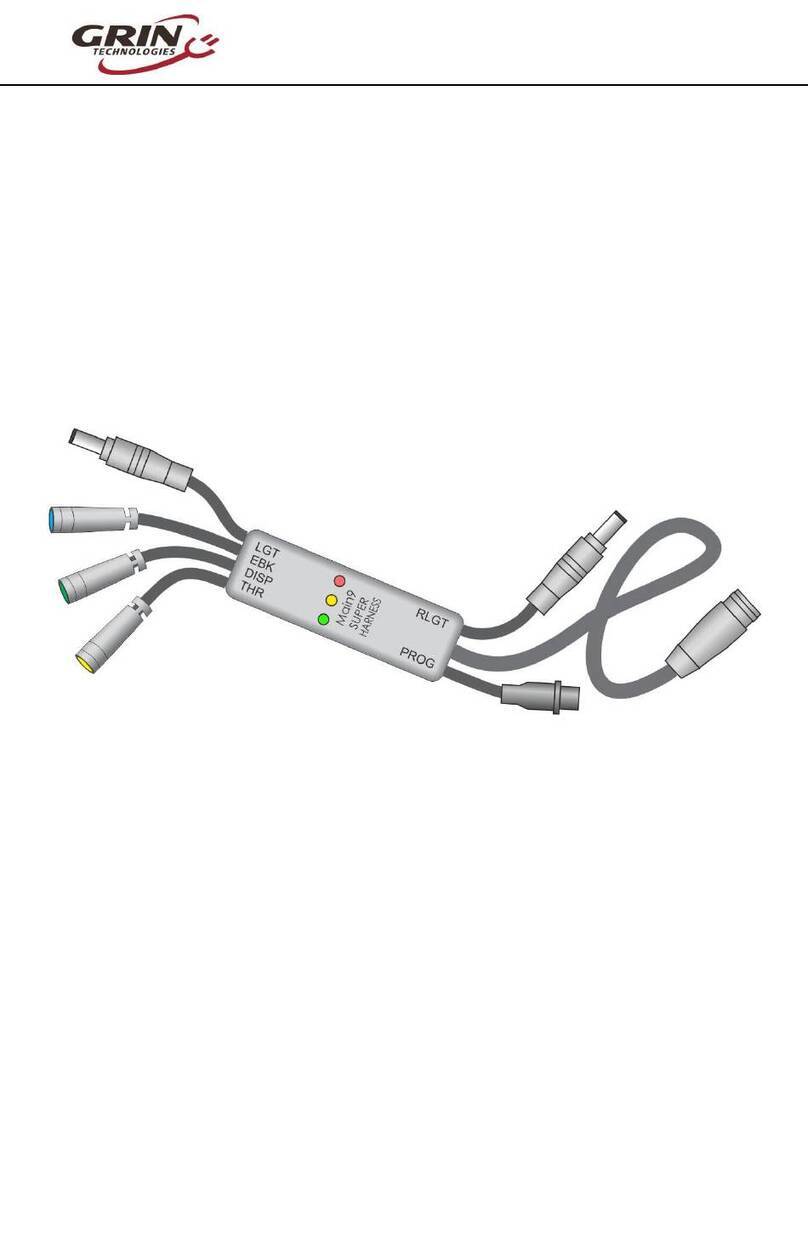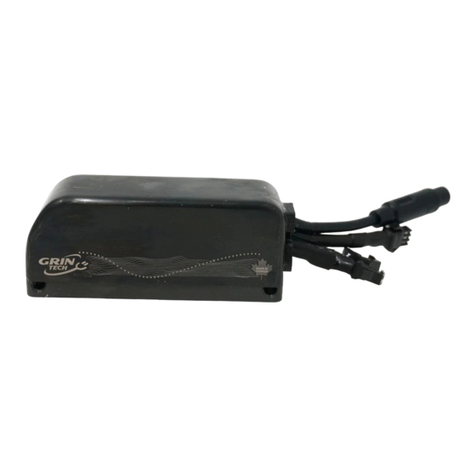
Cycl: The cycles value increments when the meter is reset. Provided
that the meter is reset each time the battery is charged then this will
indicate the number of charge and discharge cycles on the pack. In
order to prevent false cycle counts from cases where frequent
resetting is performed, the value is only incremented if more than 1.6
amp-hours was drawn at the time of the reset.
TotAh: The total battery amp-hours is a running sum of battery use
over its life to the nearest 1Ah.
TotMi or TotKm: This is the odometer function, showing the total
distance that has been travelled on the battery pack.
5. Additional Resetting Options
In addition to a regular reset to clear the trip distance, time, and amp-
hour data (see Section 1.2), there are two other reset possibilities.
5.1 Peak Reset
In some instances for diagnostic and performance testing, it is
desirable to clear only the peak statistics (Amax, Amin, Vmin, and
Smax) without resetting anything else. This can be accomplished by
holding the right reset button when the display is showing Amin, Amax,
and Vmin. The message "PEAK STATS RESET" will appear on the
screen and only the previously mentioned values will be cleared.
5.2 Full Reset
When it is time to switch battery packs, then the battery cycle count,
lifetime amp-hours, and total distance can be zeroed by performing a
full reset on the system. This is accomplished by continuing to hold the
button for 6 seconds after "RESET" is displayed. The message "FULL
RESET" will appear to indicate that all stored data has been cleared
from memory. Notice that a Full Reset does not restore any of the gain
or calibration values that may have been changed in the setup menu.
The default values for these are shown in Section 8.
9






























